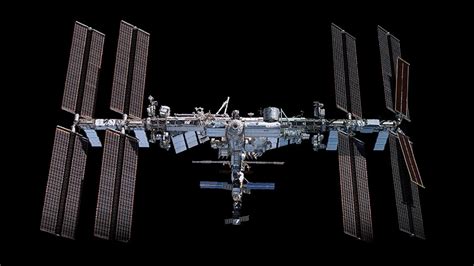The recent announcement by NASA to commission SpaceX for developing a Deorbit Vehicle specifically for the International Space Station (ISS) has sparked a wave of discussions. This contract, valued at a staggering $843 million, raises questions about the capability and design of such a vehicle. What kind of innovations and engineering marvels can we expect from SpaceX, a company already pushing the envelope of space technology? More importantly, is this purely a mission to bring down the ISS, or could it potentially open doors to future space missions?
Several commenters have voiced their concerns and ideas on what such a vehicle could achieve. One particular point made by bell-cot suggests that for $843 million, SpaceX should develop a versatile vehicle capable of more than just a one-off deorbit burn in Low Earth Orbit (LEO). Given SpaceX’s track record, it wouldn’t be surprising to see them create a vehicle that might not only deorbit the ISS but could also serve other purposes. This raises the possibility of a multi-functional spacecraft that can be reused for various missions, including debris cleanup and satellite repositioning.
Another interesting angle comes from rbanffy, who wondered if it’s possible to dismantle the ISS and return its parts to Earth, particularly using SpaceX’s Starship. This proposition sparks fascinating possibilities but also significant logistical challenges. The mass and structural integrity of the ISS components present huge hurdles for transportation. However, with Starship’s advertised capacity and the adept engineering prowess of SpaceX, it might not be entirely out of realm. Nonetheless, the political implications, especially with the Russian segments of the ISS, as pointed out by rbanffy, add another layer of complexity.
The option of long-term preservation in space was brought up by multiple commentators. LeifCarrotson mentioned the cultural and historical significance of the ISS and suggested raising it to a stable orbit, making it a kind of ‘space museum’. Indeed, preserving the ISS for future generations to explore would be incredible. Yet, as others like lxgr and wongarsu noted, the energy required to move the ISS to a geostationary or higher orbit is impractical with current technology, not to mention the risk of long-term space debris.
But let’s consider the environmental impact, as highlighted by commenters like leptons and perihelions. Deorbiting the ISS could release harmful chemicals into Earth’s atmosphere. This could severely impact the ozone layer and raise questions about the sustainability of such missions. If so much effort and funds are being put into deorbiting the ISS, perhaps additional research should focus on minimizing environmental damage. Could redirecting the ISS to a different celestial body like the moon, as playfully suggested by elif, be a more environmentally friendly option?
Practicality and sentimentality often clash when it comes to monumental decisions in space exploration. Comments from ShakataGaNai and NortySpock illustrate this perfectly. Despite the advancements and the emotional connection to the ISS, economic and technological realities cannot be ignored. Space travel and station operation costs have significantly decreased, as evidenced by the reduced launch costs of SpaceX’s Falcon 9 and Falcon Heavy. Investing further into the ISS might indeed be cost-prohibitive when new, more efficient space technologies are emerging rapidly.
The debate surrounding the ISS deorbit mission encompasses more than just the mechanical and financial aspects. It’s a question of legacy, technological progression, and environmental stewardship. As we watch SpaceX embark on this $843 million mission, we are witnessing not just the end of an era but perhaps the dawn of a new chapter in human space exploration. This endeavor will likely shape future policies and technologies, making the interaction between public agencies and private companies even more critical. What remains to be seen is whether this mission will simply be about deorbiting an old station or setting the stage for new frontiers in the cosmos.


Leave a Reply